





Panoksen
Application instruction:
 Panoksen – the combined drug having the anesthetizing effect.
Panoksen – the combined drug having the anesthetizing effect.
Form of release and structure
Dosage form of release of Panoksen – a tablet, coated: a kapsulovidny form, almost white or white, on one party – risk; the surface of a tablet can be slightly rough (on 10 pieces in blisters, on 2 or 10 blisters in a cardboard pack).
Active agents as a part of 1 tablet:
- Paracetamol – 500 mg;
- Sodium diclofenac – 50 mg.
Additional components: пропилпарагидроксибензоат (propylparaben) – 4 mg, methylparahydroxybenzoate (methylparaben) – 17,5 mg, microcrystallic cellulose – 70 mg, talc – 10 mg, corn starch – 290 mg, an atsetilftaliltsellyuloza (целлацефат) – 15 mg, diethyl phthalate – 2,5 mg, magnesium stearate – 10 mg, titanium dioxide – 13 mg, K-30 povidone – 18 mg, a white tablet covering of the CU 1005 (talc – 10,8 mg, a gidroksipropilmetiltsellyuloz (gipromelloz) – 5,5 mg, propylene glycol – 4,3 mg, titanium dioxide – 7,98 mg) – 28,5 mg.
Indications to use
- Neuralgia, sciatica, lumbago, mialgiya;
- Inflammatory diseases of a musculoskeletal system: an ankylosing spondylitis, a pseudorheumatism, psoriasis, chronic and juvenile arthritis, acute gouty arthritis (for reduction of a pain syndrome and an inflammation at the time of use);
- Diseases of circumarticular fabrics: bursitis, tendovaginitis;
- Degenerative diseases of a musculoskeletal system: the osteochondrosis deforming an osteoarthrosis;
- Dentagra;
- The posttraumatic pain syndromes proceeding with an inflammation.
Contraindications
Absolute:
- Full or incomplete combination of bronchial asthma with recuring polipozy okolonosovy bosoms and a nose and intolerance of acetylsalicylic acid or other non-steroidal anti-inflammatory drugs (including instructions in the anamnesis);
- Digestive tract erosive cankers (including duodenum);
- Inflammatory diseases of intestines;
- Active diseases of a liver;
- Active gastrointestinal bleeding;
- Heavy renal (at clearance of creatinine <30 ml a minute), liver or heart failure;
- The progressing diseases of kidneys;
- Hyperpotassemia;
- The period after performing aortocoronary shunting;
- Children's age;
- Pregnancy and period of breastfeeding (lactation);
- Hypersensitivity to drug components, and also to other derivatives of aniline or phenylacetic acid.
Relative (Panoksen appoint with care in the presence of the following diseases / states):
- Hepatic porphyria, high-quality hyperbilirubinemias (including Gilbert's syndrome);
- Peptic ulcer of a stomach and duodenum (remission or existence of instructions in the anamnesis);
- Granulematozny enteritis;
- Ulcer colitis;
- Liver diseases in the anamnesis;
- Considerable decrease in volume of the circulating blood (including after carrying out extensive surgical interventions);
- Arterial hypertension;
- Viral hepatitis;
- Alcoholism, alcoholic damages of a liver;
- Chronic heart failure easy or moderate severity;
- Bronchial asthma;
- Diseases of peripheral arteries;
- Coronary heart disease;
- Cerebrovascular diseases;
- Diabetes mellitus;
- The increased level of lipoproteins and/or lipids in blood;
- Smoking;
- Chronic renal failure (at clearance of creatinine of 30-60 ml a minute);
- Existence of an infection Helikobakter of a pilora;
- Prolonged use of non-steroidal anti-inflammatory drugs;
- Serious somatic illnesses;
- Deficit glyukozo-6-fosfatdegidrogenazy;
- The combined use with glucocorticosteroids, anticoagulants, antiagregant, selective serotonin reuptake inhibitors;
- Advanced age.
Route of administration and dosage
Panoksen it is necessary to accept inside in time or after food, washing down with a small amount of water. It is impossible to chew tablets.
The recommended dosing mode: a single dose – 1 tablet, frequency rate of reception – 2-3 times a day (as much as possible – 3 tablets (in terms of diclofenac – 150 mg)).
Duration of a course will be defined by indications:
- The acute and quickly stopped states – several days;
- Degenerative or chronic inflammatory diseases – it is long.
When performing long-term treatment it is regularly necessary to control a state (because of probability of development of an erosion of a mucous membrane of digestive tract with the subsequent gastrointestinal bleeding). For early detection of a possible hepatotoxic of drug carrying out functional trials of a liver is shown.
Side effects
- Cardiovascular system: stethalgia, heart consciousness, increase in arterial pressure, heart failure, vasculitis, myocardial infarction;
- Alimentary system: an esophagitis, an exacerbation of ulcer colitis or disease Krone, anorexia, epigastric pain, dyspepsia, nausea, diarrhea, vomiting, a meteorism, increase in activity of hepatic aminotransferases, gastritis, a proctitis, bleeding from digestive tract (a tar-like chair, vomiting with blood, diarrhea with blood impurity), an ulceration of a mucous membrane of digestive tract (with perforation or bleeding or without them), hemorrhagic colitis, hepatitis, jaundice, functional disturbances of a liver, a glossitis, stomatitis, pancreatitis, a lock, fulminant hepatitis;
- Urinary system: papillary necrosis of kidneys, nephrotic syndrome, hamaturia, acute renal failure, proteinuria, intersticial nephrite;
- Respiratory system: a pneumonitis, bronchial asthma (including an asthma);
- Nervous system: sleeplessness, headache, tremor, drowsiness, dizziness, sensitivity disturbance (including paresthesia), dysmnesias, spasms, aseptic meningitis, alarm, cerebrovascular disturbances, depression, disorientation, irritability, dreadful dreams, mental disturbances;
- System of a hemopoiesis: agranulocytosis, leukopenia, thrombocytopenia, anemia, including hemolitic or aplastic, methemoglobinemia;
- Sense bodys: a hearing disorder, вертиго, a sonitus, a vision disorder (in the form of an illegibility of visual perception, a diplopia), disturbance of flavoring feelings;
- Integuments: photosensitization, Lyell's disease, skin rash (including violent), erythema, including mnogoformny and Stephens-Johnson's syndrome, itch, exfoliative dermatitis, hair loss, purpura;
- Allergic reactions: an allergic purpura, a small tortoiseshell, anaphylactoid/anaphylactic reactions (including shock and the expressed lowering of arterial pressure), a Quincke's disease (including persons);
- Others: hypostases.
Special instructions
For reduction of probability of development of the undesirable phenomena from the alimentary system Panoksen it is necessary to accept in the smallest effective doses the courses, minimum on duration.
Because of an important role of prostaglandins in maintenance of a renal blood-groove it is necessary to show extra care at Panoksen's appointment at a heart or renal failure, and also at therapy of the patients of advanced age receiving diuretics, and patients with a reduced volume of the circulating blood (for example, after carrying out extensive surgical interventions). At purpose of drug monitoring procedure of function of kidneys is recommended to such patients (as a precautionary measure).
For action approach acceleration Panoksen it is necessary to accept in 30 minutes prior to food. In other cases it is recommended to be accepted to, at the same time or after meal, washing down with water in enough.
Against the background of Panoksen's use at quantitative determination of content of uric acid and glucose in plasma results of laboratory researches can be distorted.
At control of motor transport and performance of other types of the works demanding bystry psychomotor reactions and the increased concentration of attention it is necessary to be careful.
Medicinal interaction
Medicinal interaction of Panoksen is caused by properties of the active agents which are its part.
At the combined use of diclofenac with some medicinal means / substances the following effects can be observed:
- Hypotensive, somnolent drugs: decrease in their efficiency;
- Digoxin, lithium drugs: increase in their concentration;
- Kaliysberegayushchy diuretics: strengthening of risk of development of a hyperpotassemia;
- Diuretics: decrease in their efficiency;
- Anticoagulants, antiagregant, trombolitik (Streptokinasa, alteplaza, urokinase): increase in probability of development of bleedings (is more often – from digestive tract);
- Non-steroidal anti-inflammatory drugs, glucocorticosteroids: increase in probability of development of side effects (in the form of bleeding from digestive tract);
- Gold drugs, cyclosporine: increase in influence of diclofenac on synthesis of prostaglandins in kidneys and, therefore, nephrotoxicity;
- Methotrexate: increase in its toxicity and concentration in plasma;
- Acetylsalicylic acid: decrease in concentration of diclofenac in blood;
- The drugs blocking canalicular secretion: increase in concentration of diclofenac in plasma and, therefore, its efficiency and toxicity;
- Cyclosporine: increase in its concentration in plasma and nephrotoxicity;
- Hypoglycemic means: reduction of their effect;
- Paracetamol: increase in probability of development of nefrotoksichny effects of diclofenac;
- The means causing a photosensitization: increase in the sensibilizing effect of diclofenac to ultra-violet radiation;
- Ethanol, colchicine, corticotropin, drugs of the St. John's Wort which is made a hole: increase in risk of development of bleedings from digestive tract;
- Antibacterial agents of group of a hinolon: increase in risk of development of spasms;
- Plikamitsin, цефамандол, цефотетан, цефоперазон, valproic acid: increase in frequency of development of a prothrombinopenia;
- Selective serotonin reuptake inhibitors: increase in probability of development of bleedings from digestive tract.
At the combined use of paracetamol with some medicinal means / substances the following effects can be observed:
- Gepatotoksichny means, ethanol, inductors of microsomal enzymes of a liver (barbiturates, Phenytoinum, phenylbutazone, rifampicin, tricyclic antidepressants): increase in products of hydroxylated active metabolites and probability of developing of heavy intoxications even at small overdose;
- Uricosuric means: decrease in their efficiency;
- Anticoagulants (high doses of paracetamol): increase in their efficiency;
- Barbiturates (long use): decrease in efficiency of paracetamol;
- Salicylates (the prolonged combined use with high doses of paracetamol): increase in risk of development of cancer of kidney or bladder;
- Ethanol: development of acute pancreatitis;
- Inhibitors of microsomal enzymes of a liver (including Cimetidinum): decrease in risk of a hepatotoxic action;
- Non-steroidal anti-inflammatory drugs (prolonged combined use): increase in risk of development of a papillary necrosis of kidneys and aggravation of a renal failure (approach of an end-stage), and also "analgetic" nephropathy;
- Myelotoxic means: strengthening of manifestation of a gematotoksichnost of paracetamol;
- Diflunisal: increase in plasma concentration of paracetamol and, therefore, probability of development of a hepatotoxic.
Terms and storage conditions
To store in protected from light, the place, dry, unavailable to children, at a temperature up to 25 °C.
Period of validity – 3 years.
Name of drug
Price
Drugstore
Statistically, on Mondays the risk of getting injured of a back increases by 25%, and risk of heart attack – for 33%. Be careful.
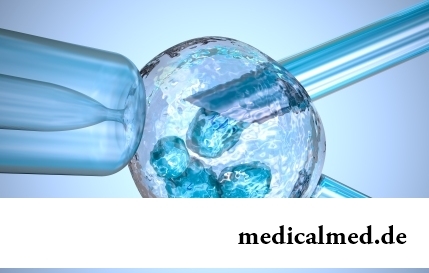
EKO, or extracorporal fertilization - a method of treatment of infertility which became the reason of a set broken mines in due time...
Section: Articles about health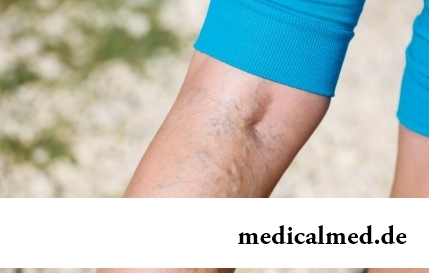
The varicosity has familiarly many, statistically, this disease more than a half of all adult population. As a rule, the varicosis affects preferential superficial vessels, and is shown by characteristic cosmetic defects. Guo...
Section: Articles about health
Smack in a mouth can arise in the natural way – as a result of lack of morning hygiene or reception of the corresponding food. However in certain cases its existence is a sign of certain pathologies, and allows to reveal an illness at an early stage. Depending on character of aftertaste – acid, salty, bitter, sweet – distinguish also diseases which accompany it....
Section: Articles about health
For the city dweller the fitness is the most convenient sport. It is enough to acquire the subscription to the gym to receive to a toast...
Section: Articles about health
Impossibility to conceive the child – a trouble of many Russian families. During quite long time was considered that main "culprits" of troubles such are women. Modern physicians claim that the situation is different: about a half of failures at...
Section: Articles about health
The naturopathy sometimes moves as the new direction of medicine, something like fashionable hobby, and there is nothing farther from the truth. This most ancient direction, the word "naturopathy" is translated as "treatment by the nature", and, no doubt, treatment by natural gifts was the first and only, available to the person in ancient times. Despite modern achievements of medicine, the naturopathy remains urgent and today, anyway the person - a part of the nature, and природн...
Section: Articles about health
The depression not without reason is considered one their main troubles of our century: for scientific and technical progress, acceleration of rate of life and a surplus...
Section: Articles about health
Each person has easy indispositions which he transfers "standing", trying not to ask for medical care. Arguments at the same time are adduced same: "it is a trifle, itself will pass", "I have too many important issues", "there are no wish to spend time on...
Section: Articles about health
You heard that laughter prolongs life? Researchers did not manage to establish longevity direct link with sincere fun yet, but several facts confirming beneficial influence of risibility on the state of health are clinically proved....
Section: Articles about health
Is told about advantage of domestic animals for development of the child much. But many parents nevertheless do not hurry to bring pets as about...
Section: Articles about health
Use of medicinal plants in therapy is urgent today, more than ever. The drugs made of curative herbs cannot replace completely modern synthetic drugs, but their use becomes frequent serious help in simplification a leak...
Section: Articles about health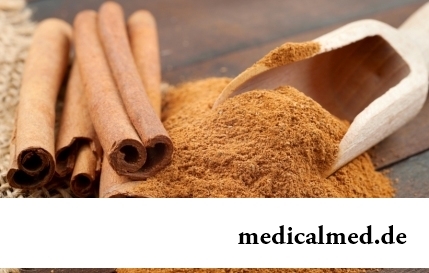
Ayurveda - the most ancient tselitelsky practice which came to us from India. It represents the doctrine about maintenance of physical, psychological and moral health of the person by means of the complex of procedures including a diet, cleaning of an organism, breathing exercises, massage, and in case of a disease - and medicinal therapy. The healers practicing Ayurveda assign very important part to spices, and at the heart of Ayurvedic drugs, as a rule, there are they. It is considered that spices not of t...
Section: Articles about health
The number of long-livers is very small. One person from 5 thousand lives up to age of 90 years, and the centenary boundary steps only about...
Section: Articles about health
The problem of diagnosis was and remains to one of the most important in medicine. From that, the reason of an indisposition of the patient will be how precisely defined, eventually success of treatment depends. In spite of the fact that the majority of the diagnostic methods applied in about...
Section: Articles about health
Residents of big cities quite often have a disease which is known as the syndrome of chronic fatigue (SCF) today. This illness affects the people belonging to various social and demographic groups and living on all continents. Most of all SHU are subject women aged from 25 up to 45 years. Statistically, the number of cases fluctuates in the different countries from 10 to 37 people on 100 thousand, but specialists believe that these figures are significantly underestimated as people, страдающ...
Section: Articles about health
Bathing in broths of medical flowers and plants (phytobathtub) was eurysynusic since Cleopatra who is a good judge of everything...
Section: Articles about health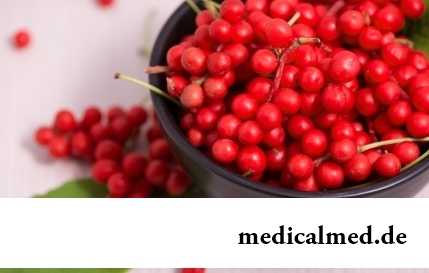
Statistically, pathologies of a thyroid gland in the world more than 500 million people have. Failures in work of this body lead to heavy disbolism, development of heart diseases, vessels, a reproductive and nervous system. In hard cases excessive...
Section: Articles about health
Antibiotics - - it is possible to call the chemical compounds suppressing growth of bacteria the break in the field of medicine which allowed to save mankind from many diseases incurable earlier: tuberculosis, plague, syphilis and many others. The contribution of drugs to rescue of people from epidemics of dangerous infections is huge, however at careless use antibiotics are capable to cause to an organism serious damage. Negative action can be shown in the form of easing of immunity, disturbance of balance of microflora in кишеч...
Section: Articles about health
It would seem, to buy drugs in Moscow does not make a problem – a drugstore, and not one, is available for each resident of the capital in step a toast...
Section: Articles about health
According to World Health Organization, every third inhabitant of Earth has excess weight, and every tenth has obesity. The reason of this phenomenon, according to specialists, roots in one not very comforting fact: most of people consume much...
Section: Articles about health
Musicotherapy – a treatment method which caused and causes a set of a controversy concerning its efficiency. However the facts are relentless: during the numerous researches curative impact of music on an organism was scientifically confirmed. Since then in a number of the countries the technique is included complex therapy of diseases of cardiovascular and respiratory system, dorsodynias and a backbone, psychosomatic disturbances and many other illnesses. The musicotherapy in a pedi is especially widely applied...
Section: Articles about health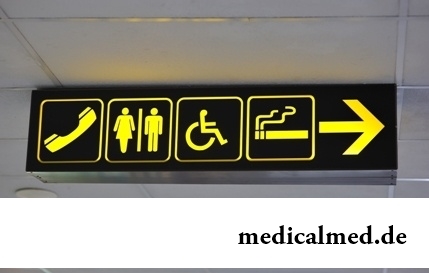
The saying "the rich do not know how the other half lives" is known to all. In a broad sense it is that we can not always understand the person, about...
Section: Articles about health
Aspirin (acetylsalicylic acid) – one of those drugs which are known literally to all. It is available in each home first-aid kit, and many accept it at the first signs of an indisposition, often without having a fair idea of properties and a therapeutic eff...
Section: Articles about health
Helminthosis is one of the most widespread diseases. Statistically, any species of helminths infected every third inhabitant of the planet. Most of specialists even consider these data strongly underestimated: some uninvited "cohabitants" do not cause the carriers serious troubles, and patients just do not see doctors. The situation is aggravated also with the fact that people know about specifics of similar illnesses very little. At many presence of worms is strong ассоциир...
Section: Articles about health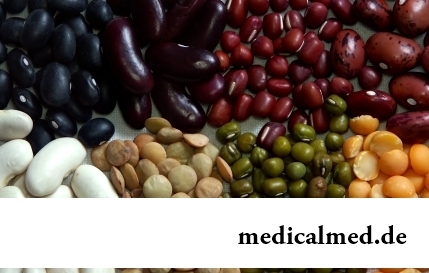
Ability of an organism to resist to adverse environmental factors (to impact of temperature drops, humidity and pressure...
Section: Articles about health
The mankind knows that some toxins at intake in the minimum quantities have therapeutic effect from an extreme antiquity. Many substances recognized poisonous are applied in the medical purposes also today, being the main deystvuyushch...
Section: Articles about health
Obesity is called a disease of 21 centuries, for the last 100 years the number of the people suffering from excess body weight considerably increased. Statistically, on Earth already about 1,5 billion corpulent people, and 500 million from them have the extreme degree of completeness negatively affecting quality and duration of their life. What served as the reason of growth of stout persons on the planet? How not to get to their ranks? Let's consider five main premises for increase in body weight in conditions современнос...
Section: Articles about health

